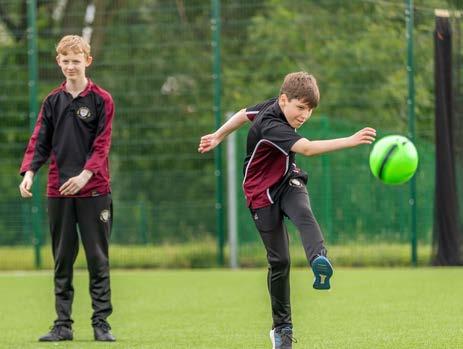
2 minute read
What is Teacher Feedback?
INTRODUCTIONWhat is Teacher Feedback?
What is teacher feedback?
Feedback is ‘information given by a teacher to For this guidance report, we focus only on feedback from teachers to pupils. Feedback may come from pupil(s) about their performance that aims to other sources, be that peers, the pupils themselves, improve learning’ (EEF, 2021, p. 7). Feedback can:or parents. However, given the size of this area, to concentrate our review and recommendations, we have focused the report exclusively on teacher feedback. • Focus on different content;Future EEF resources may focus on other sources of feedback. • Be delivered in different methods; • Be directed to different people; and • Be delivered at different times (ibid.)
When giving this information, teachers have a range of decisions to make, and can provide feedback in a variety of different ways. Feedback can: • focus on different content; • be delivered in different methods;
This specific form of feedback may be defined as:
‘information given by a teacher to pupil(s) about their performance that aims to improve learning.’ 11 • be directed to different people; and
• be delivered at different times.
These four aspects of feedback are expanded in Figure 1.
This infographic, taken from the EEF’s Teacher Feedback to Improve Pupil Learning 2021 report, exemplifies these: Figure 1: What is teacher feedback?
CONTENT 12

The content of feedback may focus on:

• the particular task that a pupil has undertaken; • the underlying processes related to a specific subject; or • a pupil’s self-regulation.
PEOPLE

Feedback may be directed towards different people, be that:
• to the whole class; • to specific groups; or • just to individuals.
METHODS
Feedback may be delivered via different methods:

• Verbally—this could be detailed conversation or quick verbal comment; or • written—this may be written comments, written marks, scores, or a combination.
TIMES

Feedback may be delivered at different times, be that:
• during a lesson; • immediately after a lesson; or • sometime after a lesson.
Teacher feedback to improve pupil learning 77
WAT’s approach to feedback aims to maximise the input-to-impact ratio so that feedback is a lever for improving students’ understanding so that they produce better quality work in future. There is an opportunity cost associated with feedback and it is important to balance the impact of that feedback with the reduction in time for other tasks, such as planning.






